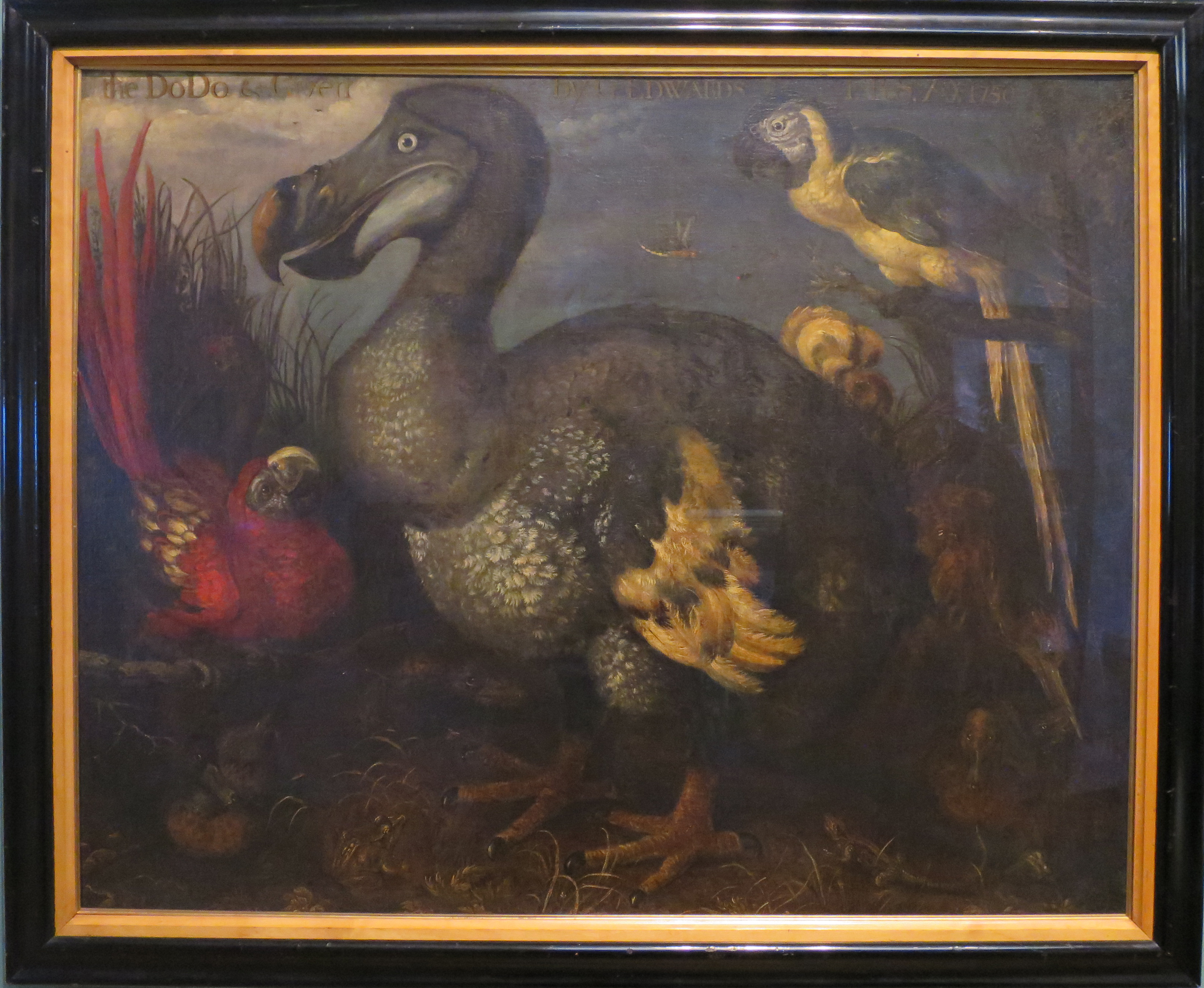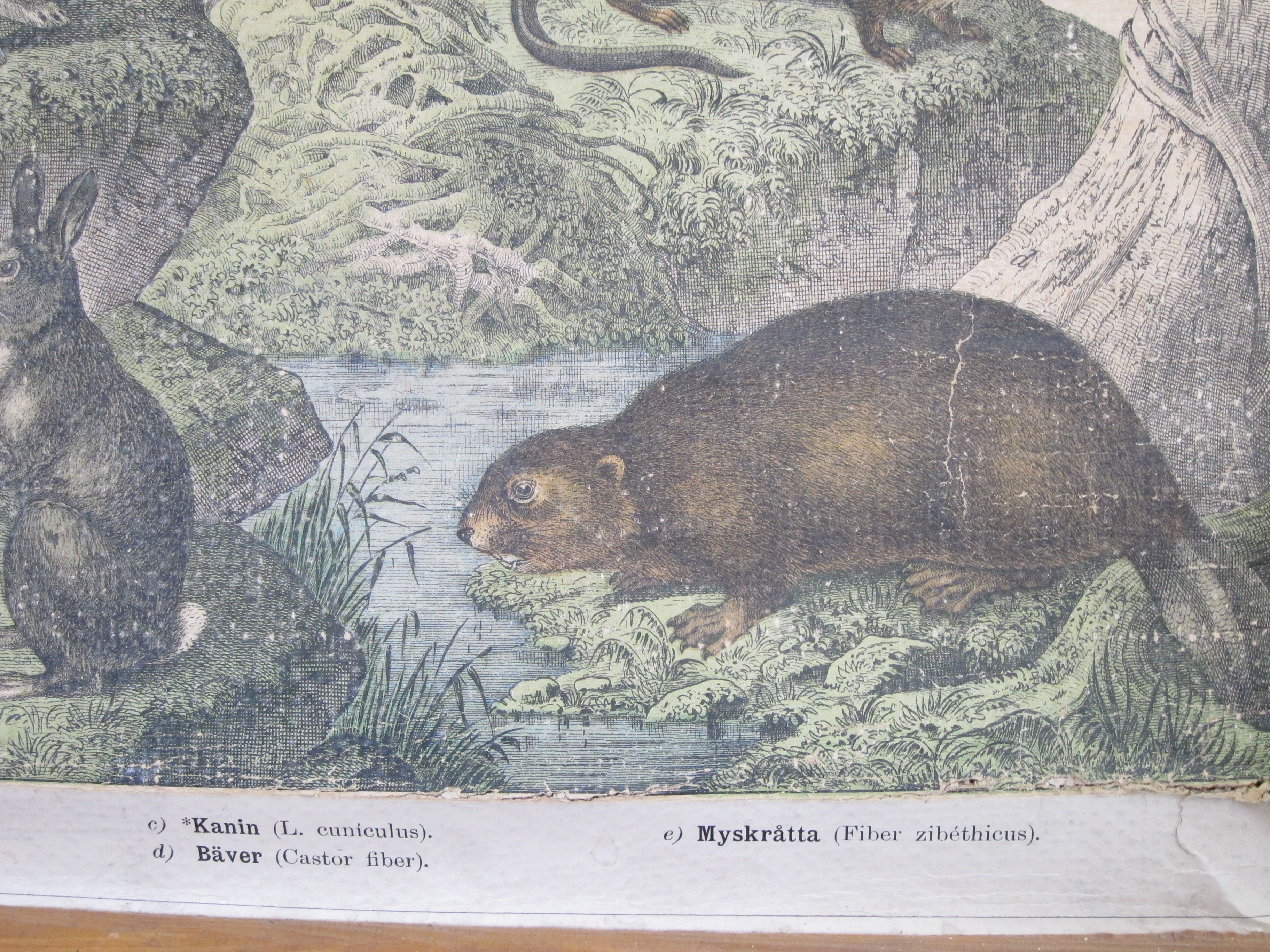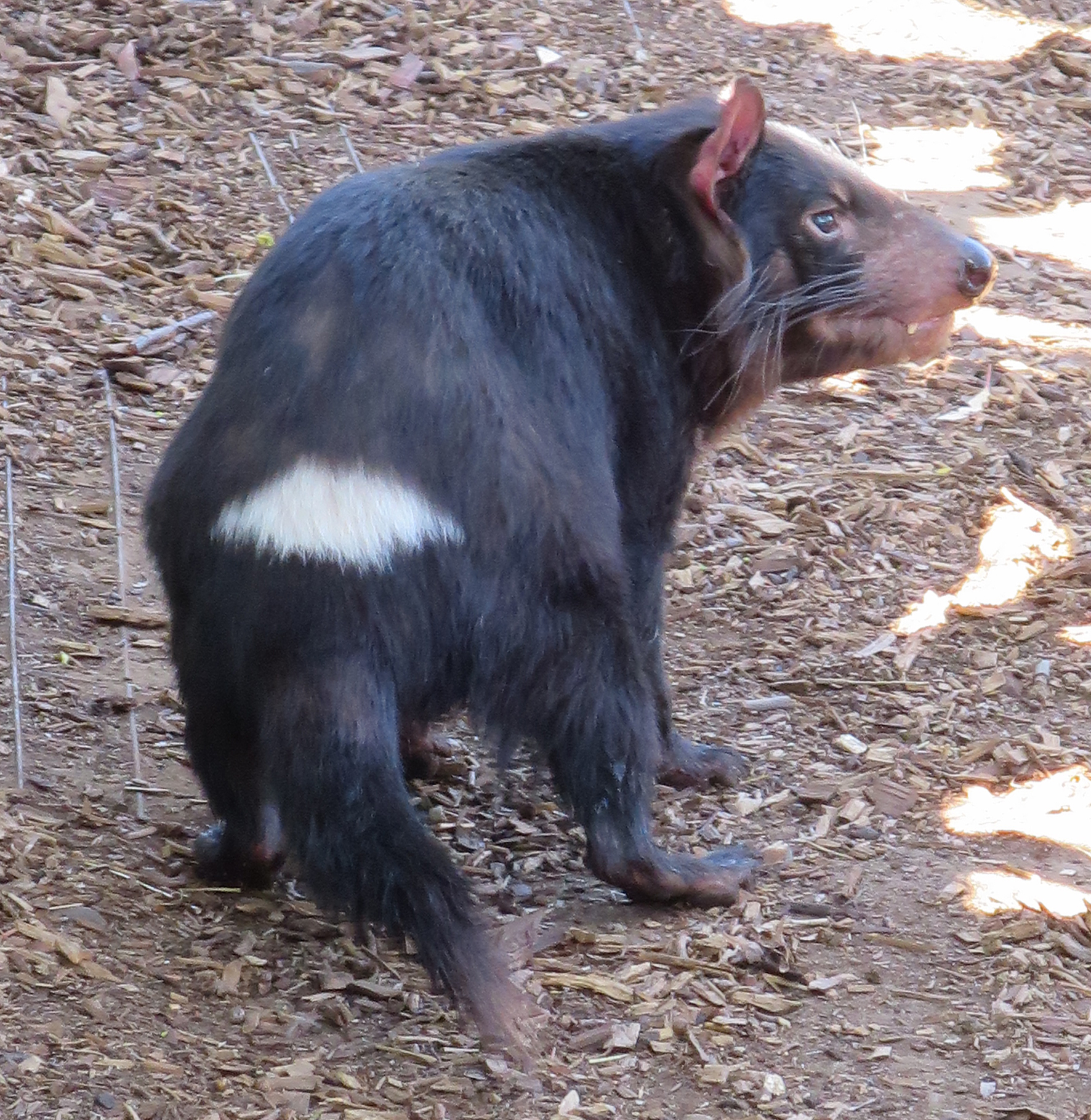
From tiger to devil
The island of Tasmania, Australia, was the final home of the large carnivorous marsupial thylacine, also known as the Tasmanian tiger because of its stripes. The last known thylacine died in September 1936 in a private zoo in Hobart, Tasmania. Because I’ve been interested in extinction and extinction stories, I visited Hobart earlier this week to see the home of the thylacine.

The thylacine has a long term place as a symbol of the island. The coat of arms of the State of Tasmania granted by King George V in 1917 features two thylacines holding up the shield. This was adopted at a time before the extinction of the thylacine and shows its iconic status. We can now read the motto “Ubertas et Fidelitas” (bounty and fidelity) as ironic since we know that the systematic extinction of the thylacine occurred in large part through bounties paid by the government, companies, and private farms.
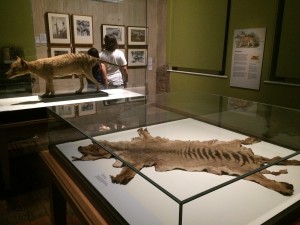
The extinction of the thylacine clearly stills weighs heavily on the people of Tasmania. The thylacine room at the Tasmanian Museum and Art Gallery exhibits the animal in different forms — mounted taxidermy, skin, and skeleton — along with photographs and moving films of captive thylacines. The dark space serves both as a preservation technique for the specimens and as a way to set the scene for a tragic story of extinction. The artefacts focus mainly on the relationship between humans (hunters, searchers, wildlife managers, zoo workers) and the animals.
Yet in spite of the central role of the thylacine in the Tasmanian cultural landscape, what struck me during my visit was how the tiger is being replaced by a devil.
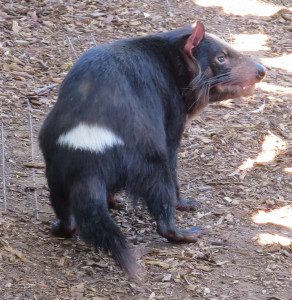
The Tasmanian devil (Sarcophilus harrisii), the largest surviving marsupial carnivore and native of Tasmania, has gained local and international attention since the transmittable Devil facial tumour disease (DFTD) was diagnosed in 1996. The disease has ravaged the devil population with some areas seeing a 95% decrease in the number of animals. Like the tiger, devils had been hunted under bounty schemes in the early 1900s, but unlike the bigger carnivore which became extinct, the population has been able to grow after legal protection in 1941.
The threat of the devil’s extinction from DFTD lead to scientific pleas for research and the establishment of the Save the Tasmanian Devil project, which has been heavily funded by the government and private actors.
When the State of Tasmania decided to adopt an official animal in 2014, the parliament chose the Tasmanian devil. In the adoption legislation, the thylacine makes an appearance — “since the loss of the thylacine, the devil has assumed a role as Tasmania’s top predator” — so the thylacine’s extinction becomes part of the reason to save the devil and name it as the symbol of Tasmania.

The shift in cultural stress from the tiger to devil was also noted by my host Kathryn Metlock from TMAG. She noted that it used to be images of the tiger that greeted visitors at the airport, but now it is devils. And I realized that she was right — it was devils that grace the covers of the tourism brochures, signs, and more, rather than thylacines. Even at the TMAG gift shops, there were baseball caps featuring devils alongside the thylacine caps, something Kathryn said was a new development. It made me wonder how long the Tasmanian government’s logo, which shows a thylacine peeking out of the grass, will continue to be the one on licence plates. Will it be replaced by a Tasmanian devil?
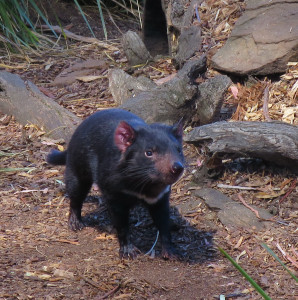
The shift from tiger to devil is worth thinking about. First, it shows that the iconic status of an animal has a specific history, with highs and lows. The Tasmanian devil was not considered a worthy symbol until it came under the threat of a new disease. The devil, so named because it was considered voracious and scary, is now presented as cute (although the signs at the wildlife park warn visitors that they bite). The Tasmanian tiger may be losing its status as time passes and no one remains alive that saw a live animal. Second, the shift shows how an extinct species may be mobilised in support of living species conservation. The extinction of the thylacine becomes the imagined future of the devils that needs to be avoided. The desire to avoid that extinction has not only resulted in investing significant money in identifying treatment for DFTD and keeping unaffected populations separated from the disease, but also proposals to reintroduce the devil to mainland Australia, where it existed until at least 3000 years ago. The devil is the tiger that may yet be saved. While the tiger was Tasmania’s past, the devil is its future.

